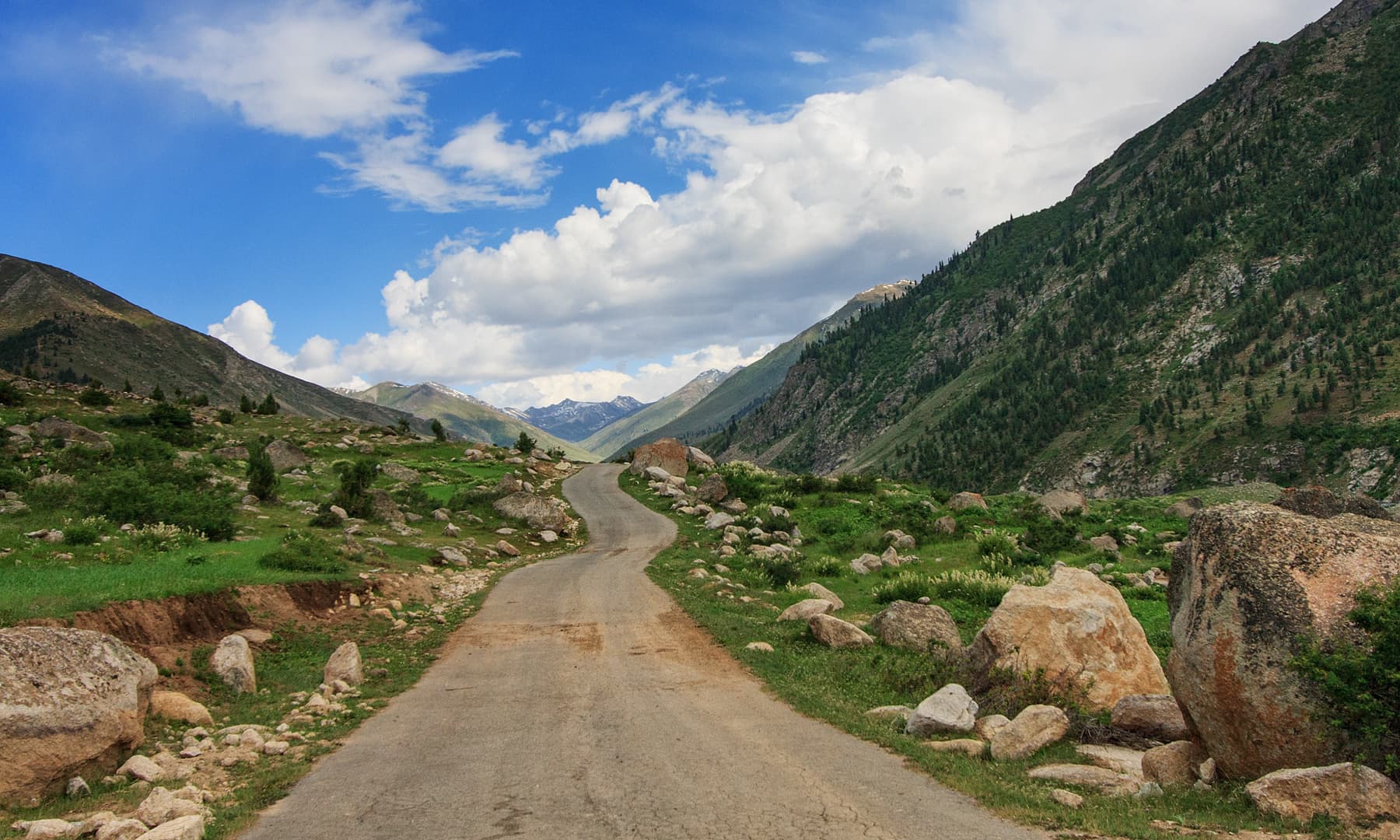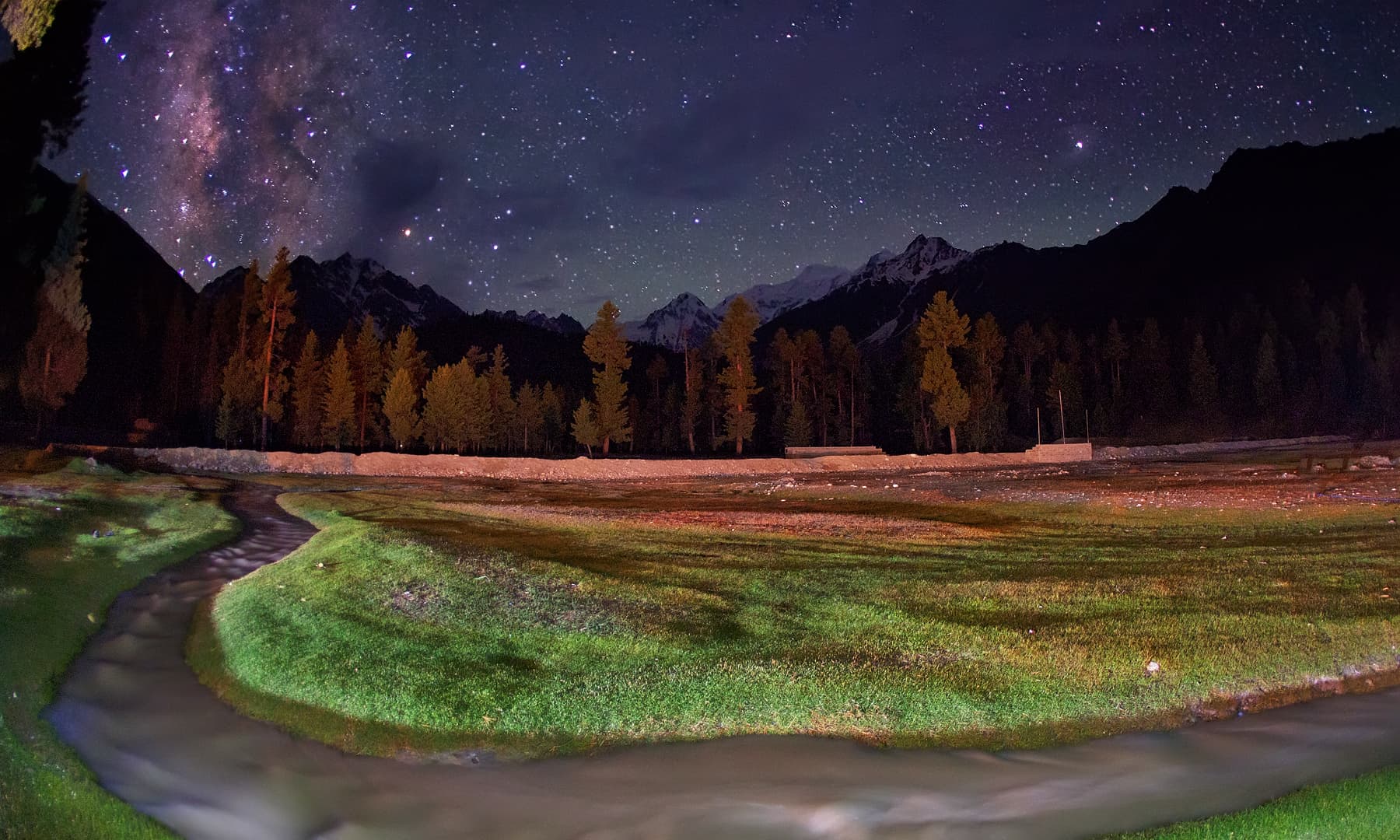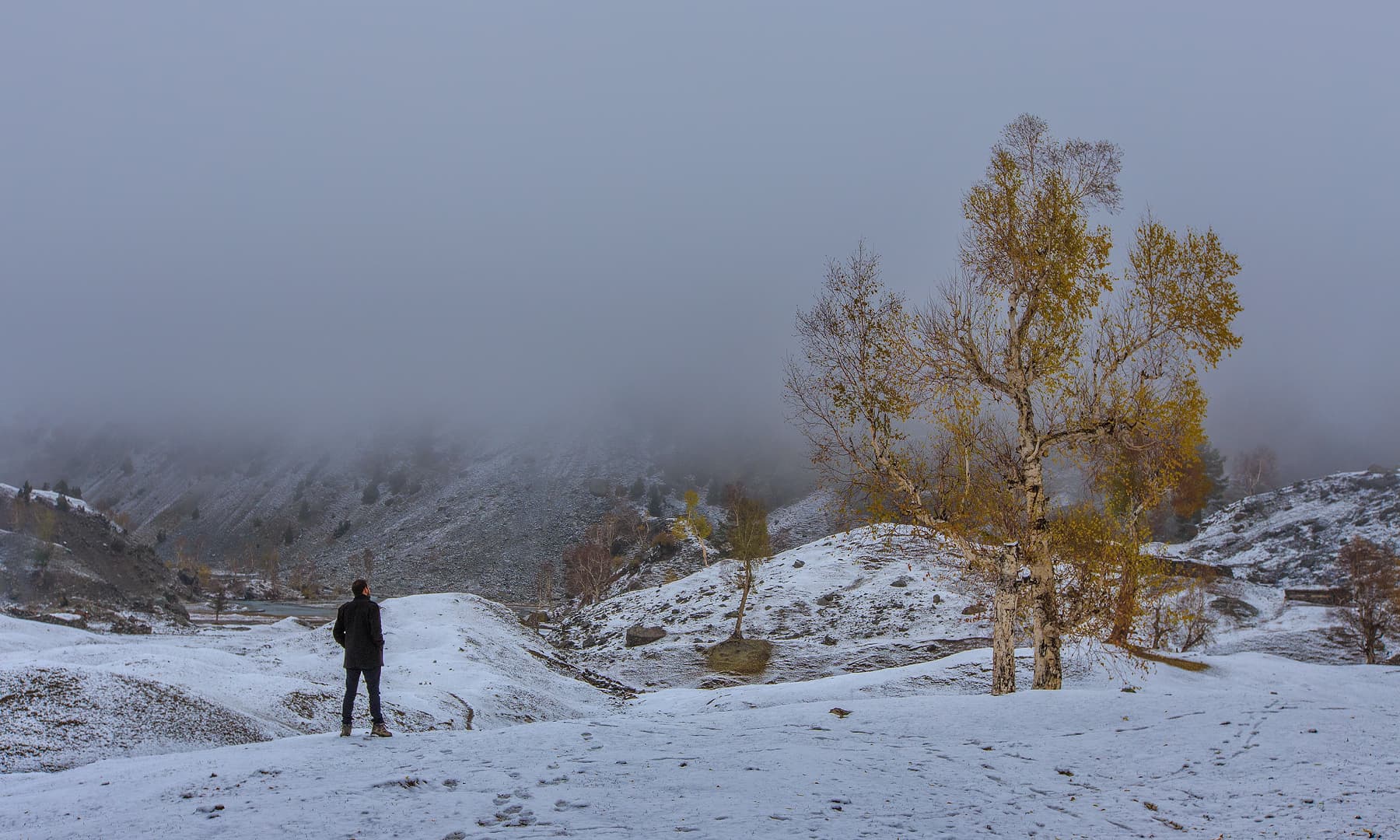
Exploring Rama Meadows and the isolation at Naltar

Earlier in my writeup on Deosai, I mentioned a grave of a young man. The valley is enveloped in darkness as I leave the place, my next destination being Astore.
Several trees grow along the trail with large shrubs running along each side of the route from Chillam to Astore. The course is just like any other mountainous route — uneven and bumpy. Passing through small towns and villages on the flank of the mountain, one can see a stream of ice-cold water gushing out from Deosai.







Ever since the dawn of civilization, humans have not only preferred living close to water but have also preferred travelling parallel to it for easier access. Walking through these vacant lands I can see dozens of villages and communities situated next to water springs, and then no settlements for long stretches.
Walking in the wilderness through small landslides along the Southern ridges of Nanga Parbat, there is no sight or sound of human beings for miles. Local men seldom show up with their herd of sheep and goats.
Going straight on Ratu is Astore, a small city and the central location of the district.
It is said that a mountaineer named Ghazi Makhpun arrived in the area and married a girl from Skardu’s royal family. His four sons became rulers of Skardu, Astore, Rondu, and Kharmang, and eventually the Dogras became powerful.
The Astore Bazaar brims with life. It is a town filled with noise and excitement and feels just like Peshawar. The sounds of jeeps, barbers, workshops, fruit and vegetable vendors and others surrounded the life around Astore.
But as soon as the sun hides behind the mountains, it gets so quiet, it is as if no human has ever been here before. A road from the bazaar takes you to Rama village, and right after this village is a beautiful and serene plain called Rama Meadow.
If you ever happen to find yourself in plain, ice-cold and milk-white water flowing in streams, sheep and cows grazing in peace, pine trees, Chongra’s ice-covered peak in background, and Nanga Parbat’s southern ridge is in view, then you are probably in Rama Meadow.
Just a little ahead of Rama Village, which is 11 kilometers from Astore, is Rama Meadow.
Since it had higher ridges than Astore, the jeep takes more than an hour to reach here, although there’s not much distance between the two. Women working in potato fields, happy children, and a scented atmosphere are the characteristics that define what we call, Rama village.
From Rama Meadow, a jeep road turns to Rama lake. You may miss the lake at first sight, but it is a fun ride up till here with Nanga Parbat in front and the forests alongside creating a strange sensation.
I decided to stay in the rest house of the forest. It is so cold here even in the summers. As the sun sets, I pick up a lantern and hit the meadow. There is no one there, except for a few people. The memories from the night are fresh in my mind to date.






There are only two motels in Rama Meadow; one is the Pakistan Tourism Development Corporation (PTDC) and the other, the Forest department.
One evening while sitting in the lawn of the Forest department's rest house, a group of female students of a Peshawar university decide to come and set camp.
The group of about 200 girls set their camps in no time, but forget to make an arrangement for washrooms. Since some military men are staying in the PTDC motel, it is inaccessible to anyone. Now there is only one washroom available, and that is in my rest house, next to my room.
The group manager, who is a doctor himself, and a very nice person, asks my permission to use the washroom. There isn’t any option but to say yes. Now I have to sit in the lawn the whole night; I am shivering and cursing myself.
The next morning there is a knock on my door again, and I get the silent message and decide to leave Rama.







My next stop is Naltar Valley. A paved but narrow road goes from Astore to Karakoram Highway, parallel to the river. The river and the road, both are equally frightening. Astore River merges in River Indus from here. Naltar is famous for its colorful lakes, it is situated at a drive of 2.5 hours from Gilgit. World’s tastiest potatoes are cultivated here. Covered with pine trees, this valley doesn’t seem to be a part of this world.
The population of Naltar mainly comprises Gujjars. Move ahead of the town, and there are lakes. The water is crystal clear with green plants easily visible at the base.
When I reach the lake after days of struggle with the Naltar’s snow, which hasn’t melted yet. The sunlight makes the snow softer, my feet stick in it easily. At some points, my legs are getting completely stuck in snow but this does not stop me from making it to the beautiful lake.
Suddenly the weather changes, and the sky becomes cloudy. I am finally here, turquoise waters with small islands in the middle, with strange shaped stones shining on the islands.
Small fish welcome me here. I don’t know which species they belong to, but in the mountains, one feels lucky to meet a life other than his own.







If you really want to experience paradise in this world, you should visit Naltar at least once. This place will make you fall in love with it.
Translated by Bilal Karim Mughal from the original in Urdu here.

The writer is a network engineer by profession, and a traveler, poet, photographer and writer by passion. He can be reached on Facebook.
The writer is an instructor at the Creative Arts Department in the University of Lahore, and a traveler, poet, photographer and writer by passion.
You can see more of his work here



